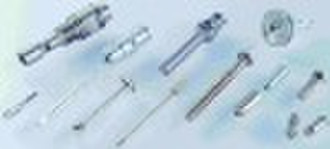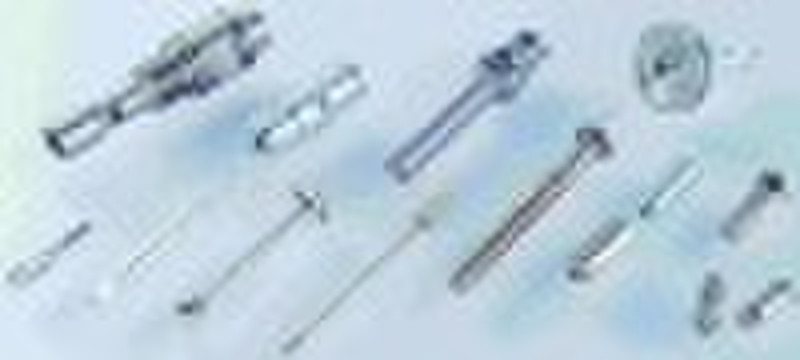Catalog
-
Catalog
- Agriculture
- Apparel
- Automobiles & Motorcycles
- Beauty & Personal Care
- Business Services
- Chemicals
- Construction & Real Estate
- Consumer Electronics
- Electrical Equipment & Supplies
- Electronic Components & Supplies
- Energy
- Environment
- Excess Inventory
- Fashion Accessories
- Food & Beverage
- Furniture
- Gifts & Crafts
- Hardware
- Health & Medical
- Home & Garden
- Home Appliances
- Lights & Lighting
- Luggage, Bags & Cases
- Machinery, Hardware & Tools
- Measurement & Analysis Instruments
- Mechanical Parts & Fabrication Services
- Minerals & Metallurgy
- Office & School Supplies
- Packaging & Printing
- Rubber & Plastics
- Security & Protection
- Service Equipment
- Shoes & Accessories
- Sports & Entertainment
- Telecommunications
- Textiles & Leather Products
- Timepieces, Jewelry, Eyewear
- Tools
- Toys & Hobbies
- Transportation
Filters
Search
Metal Turning Part
original price: 0,10 USD
Ningbo, China
Production capacity:
200 Ton / Month

Danne Lee
Contact person
Basic Information
Metal Turning Part(CNC Part,Lathe Part,Milling Part)All the products pictures on our website just showing our machining capability and ranges.We offer machining service according to customers’ drawings and requirements or samples1) Experience:Around 10 years manufacturing history.2) Price: Reasonable and competitive according to your drawings.3) Quality assurance: To ensure correct understand and choose equivalent standard for material and technique requirements, before running, we would like to provide formal material certificate showing chemical compositions and property. Also if you need, we can provide control plan showing processing and inspection tooling4) Quality control: In house coming inspection, first of all, spot check in processing, final inspection 100% inspection for critical dimension, 10% for others.5) Small order acceptable6) Packing: Carton box or iron case or pallet or depend on your requirement7) Delivery time:20-60days after confirmation, according to your requirements and production quantity.8) Payment:By T/T, 30% deposit before production, balance against copy of B/L or 100%L/C at sight9) Honesty and professional services.10) Production application:equipment machinery parts, agricultural machinery parts, machined parts, auto parts, trailer parts, construction parts, various machinery parts.A.General Introduction:Turning is the process whereby a single point cutting tool is parallel to the surface. It can be done manually, in a traditional form of lathe, which frequently requires continuous supervision by the operator, or by using a computer controlled and automated lathe which does not. This type of machine tool is referred to as having computer numerical control, better known as CNC. and is commonly used with many other types of machine tool besides the lathe.When turning, a piece of material (wood, metal, plastic, or stone) is rotated and a cutting tool is traversed along 2 axes of motion to produce precise diameters and depths. Turning can be either on the outside of the cylinder or on the inside (also known as boring) to produce tubular components to various geometries. Although now quite rare, early lathes could even be used to produce complex geometric figures, even the platonic solids; although until the advent of CNC it had become unusual to use one for this purpose for the last three quarters of the twentieth century. It is said that the lathe is the only machine tool that can reproduce itself.The turning processes are typically carried out on a lathe, considered to be the oldest machine tools, and can be of four different types such as straight turning, taper turning, profiling or external grooving. Those types of turning processes can produce various shapes of materials such as straight, conical, curved, or grooved workpiece. In general, turning uses simple single-point cutting tools. Each group of workpiece materials has an optimum set of tools angles which have been developed through the years. The bits of waste metal from turning operations are known as chips (North America), or swarf (Britain). In some areas they may be known as turnings. B.Turning Operation This operation is one of the most basic machining processes. That is, the part is rotated while a single point cutting tool is moved parallel to the axis of rotation. Turning can be done on the external surface of the part as well as internally (boring). The starting material is generally a workpiece generated by other processes such as casting, forging, extrusion, or drawing. Tapered turning a) from the compound slide b) from taper turning attachment c) using a hydraulic copy attachment d) using a C.N.C. lathe e) using a form tool e) by the offsetting of the tailstock - this method more suited for shallow tapers Spherical generation The proper expression for making or turning a shape is to generate as in to generate a form around a fixed axis of revolution. a) using hydraulic copy attachment b) C.N.C. (computerised numerically controlled) lathe c) using a form tool (a rough and ready method d) using bed jig (need drawing to explain)Hard turningHard turning is a turning done on materials with a Rockwell C hardness greater than 45. It is typically performed after the workpiece is heat treated.The process is intended to replace or limit traditional grinding operations. Hard turning, when applied for purely stock removal purposes, competes favorably with rough grinding. However, when it is applied for finishing where form and dimension are critical, grinding is superior. Grinding produces higher dimensional accuracy of roundness and cylindricity. In addition, polished surface finishes of Rz=0.3-0.8z cannot be achieved with hard turning alone. Hard turning is appropriate for parts requiring roundness accuracy of 0.5-12 micrometres, and/or surface roughness of Rz 0.8–7.0 micrometres. It is used for gears, injection pump components, hydraulic components, among other applications.Facing is part of the turning process. It involves moving the cutting tool at right angles to the axis of rotation of the rotating workpiece. This can be performed by the operation of the cross-slide, if one is fitted, as distinct from the longitudinal feed (turning). It is frequently the first operation performed in the production of the workpiece, and often the last- hence the phrase "ending up". Parting,this process is used to create deep grooves which will remove a completed or part-complete component from its parent stock.Grooving is like parting, except that grooves are cut to a specific depth by a form tool instead of severing a completed/part-complete component from the stock. Grooving can be performed on internal and external surfaces, as well as on the face of the part (face grooving or trepanning).Boring i.e. the machining of internal cylindrical forms (generating) a) by mounting workpiece to the spindle via a chuck or faceplate b) by mounting workpiece onto the cross slide and placing cutting tool into the chuck. This work is suitable for castings that are to awkward to mount in the face plate. On long bed lathes large workpiece can be bolted to a fixture on the bed and a shaft passed between two lugs on the workpiece and these lugs can be bored out to size. A limited application but one that is available to the skilled turnerDrilling is used to remove material from the inside of a workpiece. This process utilizes standard drill bits held stationary in the tail stock or tool turret of the lathe.
Delivery terms and packaging
Packaging Detail: pcs/carton then into pallet Delivery Detail: 40days after receipt of deposit or L/C
Port: Ningbo or Shanghai
Payment term
Letter of credit
Telegraphic transfer
MoneyGram
Western Union
-
Payment Methods
We accept:









